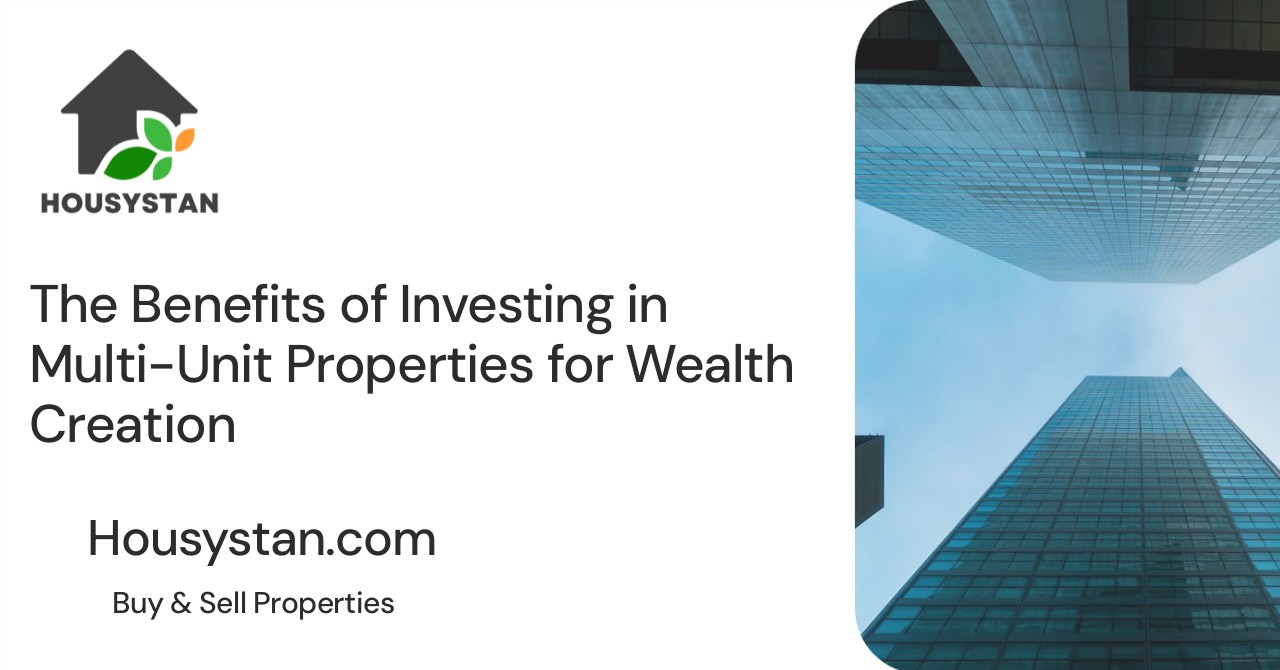The Benefits of Investing in Multi-Unit Properties for Wealth Creation
Read latest blogs and articles from Housystan

The Information mentioned here was last updated on:
27/11/2025The Benefits of Investing in Multi-Unit Properties for Wealth Creation
Investing in real estate has long been a trusted strategy for wealth creation. Among the many options available to eager investors, multi-unit properties present unique advantages that can significantly boost financial growth. This article will explore these benefits, providing readers with a comprehensive understanding of why multi-unit properties are an attractive investment choice.
Understanding Multi-Unit Properties
- Verified Tenants/Buyers
- Unlimited Property Listing
- Zero subscription/charges fee
Before diving into the advantages, it is important to clarify what multi-unit properties are. Simply put, these are buildings that house multiple separate units within a single structure or complex. Common examples include duplexes, triplexes, and apartment buildings. Unlike single-family homes, these properties allow investors to own multiple rental units within a single investment.
Steady and Diverse Income Stream
One of the most appealing benefits of investing in multi-unit properties is the ability to generate a steady and diversified income stream. Since these properties contain several units, investors can collect rent from multiple tenants at once. This setup not only increases the total rental income but also spreads financial risk. If one unit becomes vacant, the income from other rented units can help offset the loss, ensuring a more stable cash flow.
Economies of Scale
Multi-unit properties allow investors to benefit from economies of scale, making them a cost-effective investment. For instance, maintenance costs, property management fees, and other operational expenses are generally lower on a per-unit basis when spread across multiple tenants. This efficiency means that multi-unit property owners can potentially maximize their profits due to reduced expenditure.
Higher Return on Investment
Another advantage of multi-unit properties is the potential for a higher return on investment (ROI) compared to single-family homes. Since multiple tenants are contributing to the cash flow, these properties often generate greater income relative to their cost. Additionally, the ability to increase rents and improve property value through renovations can further enhance ROI over time.
Easier Financing Options
Investing in multi-unit properties can sometimes offer more favorable financing options. Financial institutions often view these investments as less risky due to the ability to generate consistent income from multiple sources. As a result, lenders may offer better interest rates or terms for multi-unit property investors.
Secure Long-Term Investment
In the realm of real estate investment, multi-unit properties are considered a secure long-term investment. With the global trend of urbanization, demand for rental housing continues to rise. More people are choosing to rent rather than buy, ensuring that multi-unit property investors have a steady pool of potential tenants. This trend is a key factor in maintaining and increasing property values over the long term.
Tax Benefits
Investing in multi-unit properties opens the door to various tax benefits. Property owners can claim deductions on mortgage interest, property taxes, insurance premiums, and even certain maintenance costs. Additionally, depreciation can be used to offset rental income, potentially reducing the investor’s overall tax burden. Consulting with a tax professional can help in understanding and maximizing these benefits.
Building Equity
As tenants pay rent, they contribute to the reduction of the mortgage balance on the property. Over time, this not only builds equity in the property but also increases the investor’s net worth. This equity can be leveraged in the future to finance additional investments or secure favorable loans for other purposes.
Scalability and Portfolio Growth
Multi-unit properties are a scalable investment option. Once investors become comfortable managing one property, it is relatively straightforward to expand their portfolio by acquiring additional multi-unit buildings. This scalability makes it easier to grow wealth through real estate compared to the slower-paced accumulation possible with single-family residences.
Community Impact
Owning and managing multi-unit properties also provides an opportunity to positively impact the community. By maintaining well-kept and affordable rental units, landlords contribute to the overall stability and desirability of neighborhoods. This not only benefits tenants but also enhances property value, which can positively affect the entire investment portfolio.
Less Competitive Market
The market for multi-unit properties can be less competitive than the single-family home market. Many individual investors focus on single-family homes, which can lead to fierce bidding wars in certain areas. Multi-unit properties, on the other hand, often attract investors who are more experienced or focused on building larger portfolios. This reduced competition can result in more favorable purchase prices for savvy investors willing to explore this sector.
Conclusion Avoidance
When considering real estate investment options, multi-unit properties stand out for their potential to deliver significant financial benefits. From steady income streams and favorable financing to tax benefits and portfolio growth, these investments offer a strategic path to wealth creation. As more individuals seek to rent rather than buy, the demand for such properties is set to remain robust. Exploring the advantages of multi-unit properties can unlock a wealth-building opportunity that aligns with the evolving real estate market landscape.